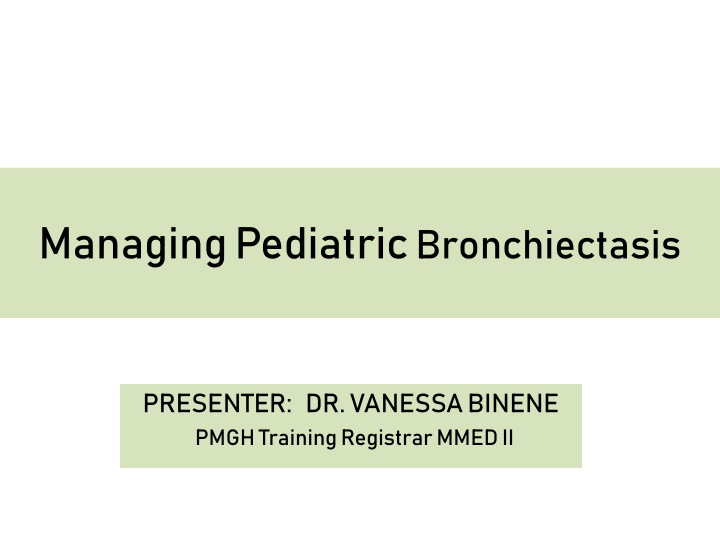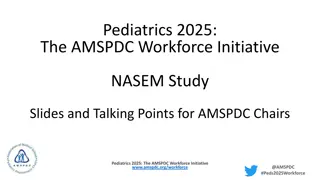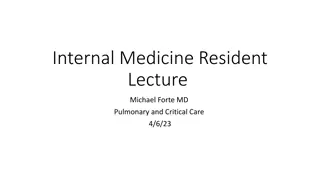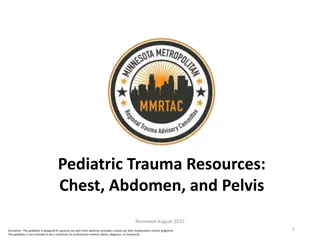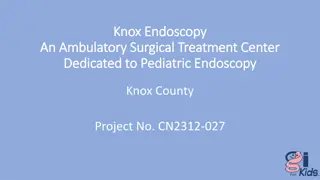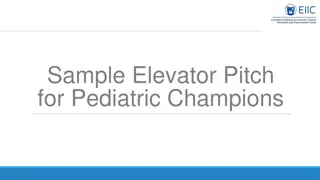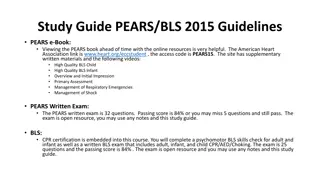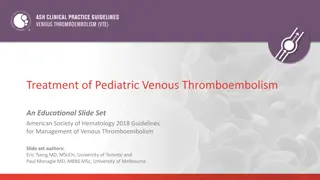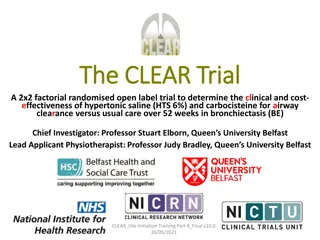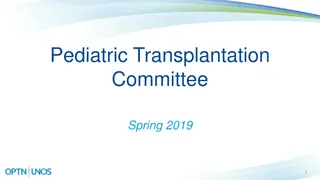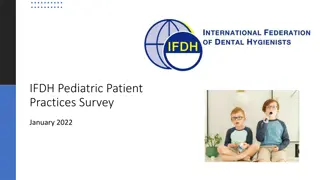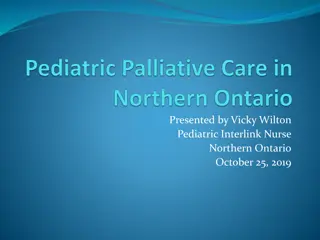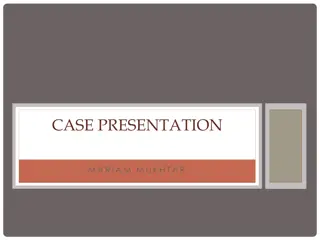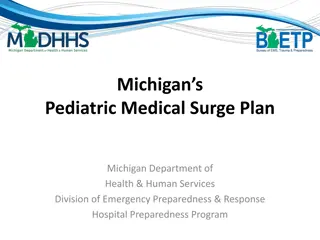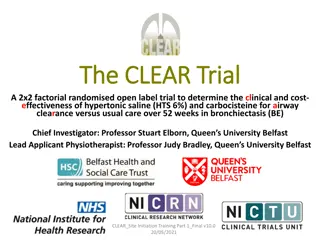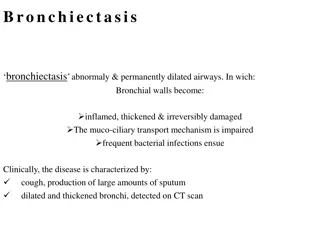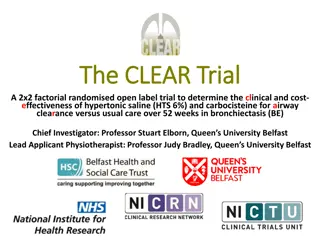Managing Pediatric Bronchiectasis
Bronchiectasis in pediatric patients presents challenges including high case fatality rates, poor quality of life, and diagnostic nuances. Recognizing symptoms of chronic cough and recurrent infections, utilizing spirometry for evaluation, and differentiating diagnostic imaging modalities are crucial for timely management and prevention of complications.
Download Presentation

Please find below an Image/Link to download the presentation.
The content on the website is provided AS IS for your information and personal use only. It may not be sold, licensed, or shared on other websites without obtaining consent from the author.If you encounter any issues during the download, it is possible that the publisher has removed the file from their server.
You are allowed to download the files provided on this website for personal or commercial use, subject to the condition that they are used lawfully. All files are the property of their respective owners.
The content on the website is provided AS IS for your information and personal use only. It may not be sold, licensed, or shared on other websites without obtaining consent from the author.
E N D
Presentation Transcript
Managing Pediatric Bronchiectasis PRESENTER: DR. VANESSA BINENE PMGH Training Registrar MMED II
OUTLINE SCOPE OF PROBLEM IN PMGH 2022 RECOGNISING AND DIAGNOSING MANAGEMENT MONITORING Exercise Tolerance Test Peak Flow Rate Diary PREVENTION PersonalisedAction Plan Management CONCLUSION AND RECOMMENDATION
PROBLEM: High Case Fatality Rate in PMGH 23 Bronchiectasis Patients in 2022, with a 44% Mortality Rates 40 36 35 30 23 25 20 15 Average Length of Hospital Stay: 28.5 days 10 10 5 0 Total Patients Total Admissions Total Deaths
PROBLEM: Poor Quality of Life Frequent exacerbations Multiple Readmissions Longer length of hospital stay High Case Fatality Rate Multiple disciplinary care- hospital staff and resources burden Socioeconomic burden on caregivers and parents Used with permission
DIAGNOSIS: Recognizing Bronchiectasis Chronic wet or productive cough Failure of the wet/productive cough to respond to 4weeks of antibiotics initial treatment predicts presence of bronchiectasis Arch Dis Child 2014; 99:522 Recurrent chest infections The presence of chronic cough at 3-4 weeks post- bronchiolitis hospitalization was a risk factor for bronchiectasis, 20 % developed bronchiectasis within 13 months after discharge. Pediatr Pulmonol 2016; 51:613-623
DIAGNOSIS: Chest Radiograph vs. CT Scan The chest radiograph should not be used to exclude bronchiectasis McGuinness G. et al AJR Am J Roentgenol 1993; 160:253. Example: 14 patients with bronchiectasis diagnosed by HRCT, none had evidence on chest radiograph. Silverman PM, Godwin JD. J Comput Assist Tomogr 1987; 11:52 Source: Radiologykey.com
DIAGNOSIS: Spirometry All children with suspected or confirmed bronchiectasis should be evaluated with spirometry at diagnosis and with serial measures in follow-up UpToDate. Bronhiectasis FEV1 and FEF 25% 75% values were significantly lower in children with Bronchiectasis (p=0.004). Patria et al. Italian Journal of Pediatrics (2016) 42:13 Source: www.aboutkidshealth.ca/Article
MANAGEMENT: Antibiotic use Acute Pulmonary Exacerbation: Amoxycillin- clavulanate for 14 days Maintanance therapy Azithromycin 3x weekly if a frequent exacerbator for at least 6 months Pseudomonas Aeruginosa -Ciprofloxacin if less symptomatic -IV antibiotics for 2 weeks: Piperacillin- tazobactam or ceftazidime+tobramycin Chang AB et al ERS Guidelines, Eur Respir J 2021;58
MANAGEMENT: what about bronchodilators and mucoactive agents? (asthma-type treatment) Inhaled corticosteroids (ICS) should not be used routinely. No studies yet on the use of SABA but it depends on the clinician. Eg: Of the 21 patients in Italy diagnosed with Bronchiectasis, 33.3% (7) responded well to bronchodilators. Patria et al. Italian Journal of Pediatrics (2016) 42:13 6-7% hypertonic saline or Inhaled mannitol may be considered in selected patients only. Chang AB et al ERS Guidelines, Eur Respir J 2021;58
MANAGEMENT: Airway Clearance Technique During acute exacerbations, children should receive ACT more frequently. Individualized ACT that are development and age-appropriate Chang AB et al ERS Guidelines, Eur Respir J 2021;58 Source: Frontiers in Pediatrics/ACT in pediatrics
MONITORING THERAPEUTIC TRIAL: Exercise Tolerance Test Source:Duke T, etal. ArchDis Child 2017 Source: MMED 2 Research
MONITORING: Peak Flow Rate Diary Source: MMED 2 Research
MONITORING: Therapeutic trials and improvement 3-6 months of routine monitoring of: Sputum cultures every 6-12 months Lung function (Spirometry for FEV1 and FVC) Pulse Oximetry Nutritional Care Education on Equipment use and care Psychological support Chang AB et al ERS Guidelines, Eur Respir J 2021;58
PREVENTION: Personalized Action Plan Source: MMED 2 Research
PREVENTION: Personalized Action Plan Source: MMED 2 Research
CONCLUSION: Can pediatric bronchiectasis be reversed or stabilized?Yes Implementing early recognition, a thorough diagnosis and aggressive management with monitoring improved patient outcome and prevented further complications. Eralp et al.BMC Pulmonary Medicine (2020) 20:172 EARLY RECOGNITION, PROMPT TREATMENT, MONITORING and PREVENTION can help improve a child s lung function, thus giving him/her a better quality of life.
RECOMMENDATIONS In PNG where Pneumonia, Bronchiolitis, PTB and RVI are common, and with a poor vaccine cover. PNG Pediatrics should: Have Respiratory Medicine a branch of Pediatric Specialty Use Spirometry, Peak flow meter use and Exercise Tolerance test for monitoring treatment response as in patient or out patient. Incorporate Personalised Action Plan Managements
REFERENCES 1. 2. UptoDate. Bronchiectasis Goyal V, Grimwood K, Marchant J, et al. Does failed chronic wet cough response to antibiotics predict bronchiectasis? Arch Dis Child 2014; 99:522. McCallum GB, Chatfield MD, Morris PS, Chang AB. Risk factors for adverse outcomes of Indigenous infants hospitalized with bronchiolitis. Pediatr Pulmonol 2016; 51:613. McGuinness G, Naidich DP, Leitman BS, McCauley DI. Bronchiectasis: CT evaluation. AJR Am J Roentgenol 1993; 160:253. Silverman PM, Godwin JD. CT/bronchographic correlations in bronchiectasis. J Comput Assist Tomogr 1987; 11:52. Patria MF et al. Children with recurrent pneumonia and non-cystic fibrosis bronchiectasis, Italian Journal of Pediatrics (2016) 42:13 Chang AB, Fortescue R, Grimwood K, et al. European Resiratory Society guidelines for the management of children and adolescents with bronchiectasis. Eur Respir J 2021;58. DukeT, Kasa TomS, PokaH, etal. Arch Dis Child .doi:10.1136/ archdischild- 2017-313095 Eralp EE et al. Changing clinical characteristics of non-cystic fibrosis bronchiectasis in children. BMC Pulmonary Medicine (2020) 20:172 3. 4. 5. 6. 7. 8. 9.
